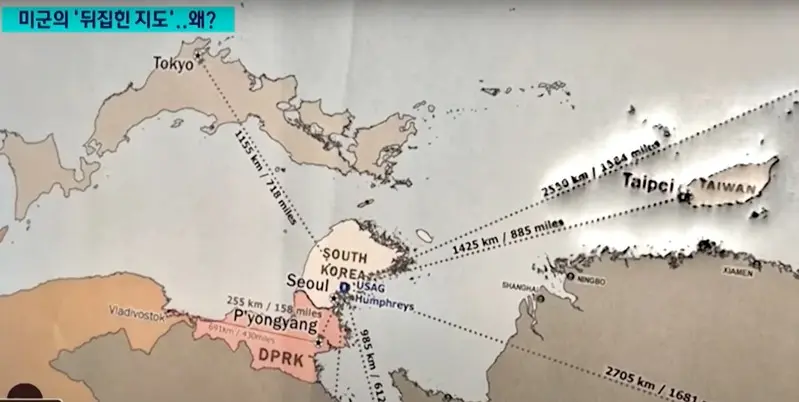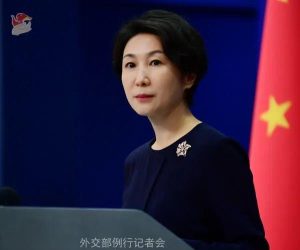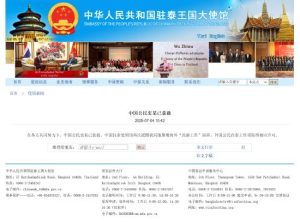The internal strategic map of the US military stationed in South Korea is exposed: 180-degree reversal of East Asia, uniting Japan, South Korea and Taiwan to encircle China

South Korea’s NEWS1 reported that there are signs that the United States seems to be adjusting its strategy toward China in Northeast Asia, shifting the role of the U.S. military in Japan and South Korea from “containment” to “expansion”, and increasing its influence in the South China Sea to check and balance China. Recently, the U.S. military in South Korea used an upside-down map of Northeast Asia in security briefings, making Taiwan and the Philippines more prominent, forming a new strategic image of surrounding China. According to the U.S. military’s “strategic flexibility” principle, if a military conflict breaks out in areas outside the Korean Peninsula in the future, such as Taiwan, the U.S. military in South Korea may intervene.
NEWS1 reported that the U.S. military in South Korea recently displayed an upside-down, 180-degree rotated Northeast Asia map in briefings for internal and external security experts, placing the South China Sea at the top of the map, and Taiwan and the Philippines in the upper right corner of the map, in a more eye-catching position, forming a geopolitical composition surrounding China.
A source familiar with U.S.-South Korea relations said, “It is no exaggeration to say that discussions on changing the role of the U.S. military in South Korea are in-depth,” and “The role of the U.S. military in South Korea will definitely change.”
In this map, the US military’s Yokota Air Force Base in Japan is located in the middle of the map; while the US military’s Camp Humphreys in Pyeongtaek in South Korea is marked as the front line, facing China; the distance between each base is also marked in miles and kilometers. In addition, the US military base in Okinawa, the southernmost part of Japan, is also presented as a forward base extending to the South China Sea, forming a visual strategic situation that may make Beijing uneasy, from the traditional defense-based “containment” to the forward containment of “expansion”.
In addition, according to NEWS1, from this map, it can be seen that the US military base in Japan is listed as a base camp; while the Okinawa and Pyeongtaek bases are forward bases, which also means that the two major US military bases have changed from a complementary form to a vertical subordinate system.
On the 27th, Stephen F. Jost, Air Force Lieutenant General of the US Forces in Japan and commander of the 5th Air Force, wrote to the Japanese Asahi Shimbun that a new unit has been established recently within the US Forces in Japan, and the command authority will be gradually expanded in the next few years. The Joint Combined Task Force will also be expanded. It can be seen that the US military has shifted its focus to the bases in Japan and strengthened its control in Northeast Asia.
According to South Korean media SBS News, J.B. Brunson, commander of the US Forces in Korea, said in May that just by looking at this map, you can understand why strategic flexibility is necessary. He also pointed out that the role of the US Forces in Korea should not be limited to the Korean Peninsula.
SBS News reported that the US Forces in Korea will show this inverted map to the South Korean media as early as next month to illustrate its strategic flexibility concept.







